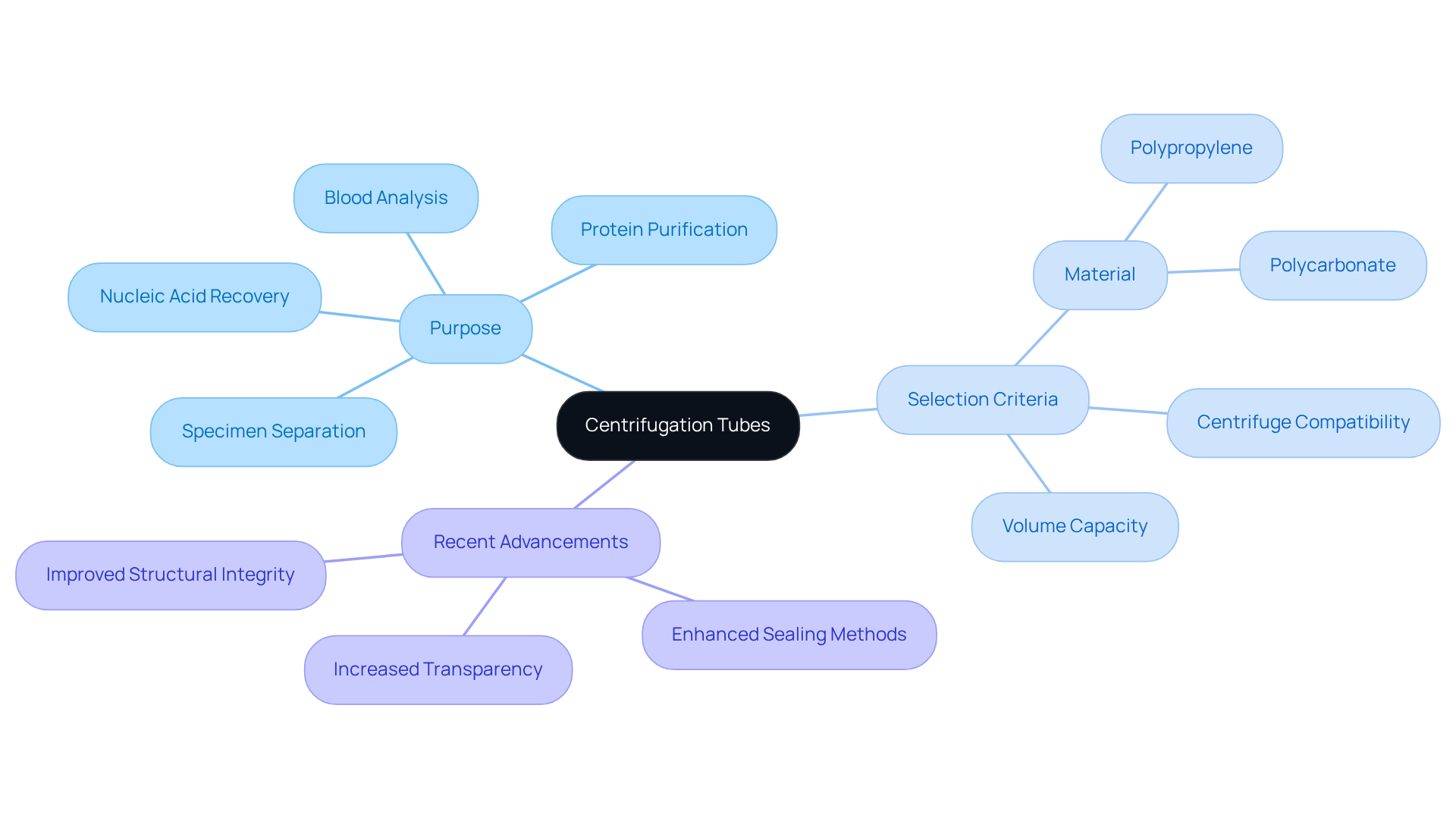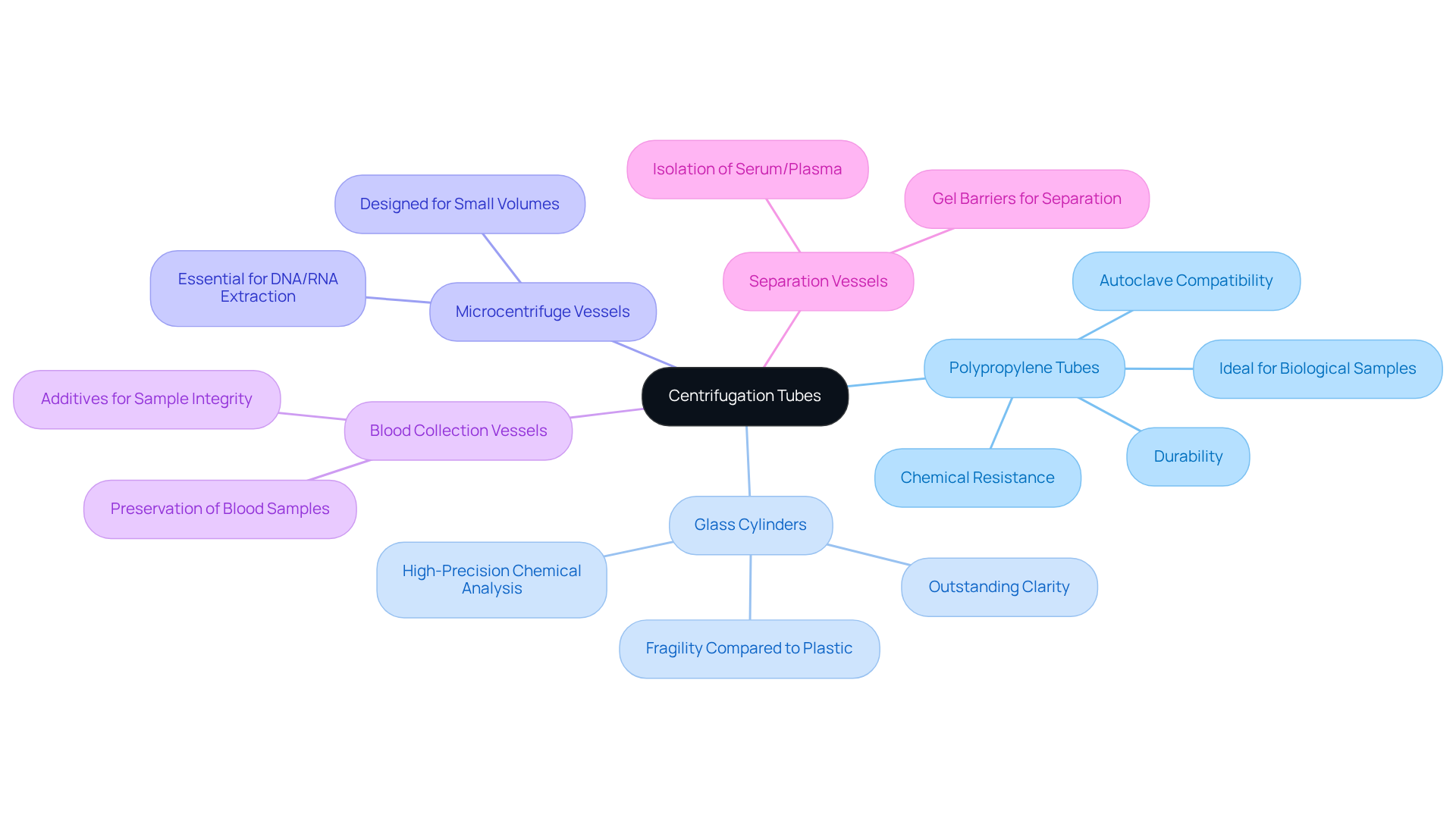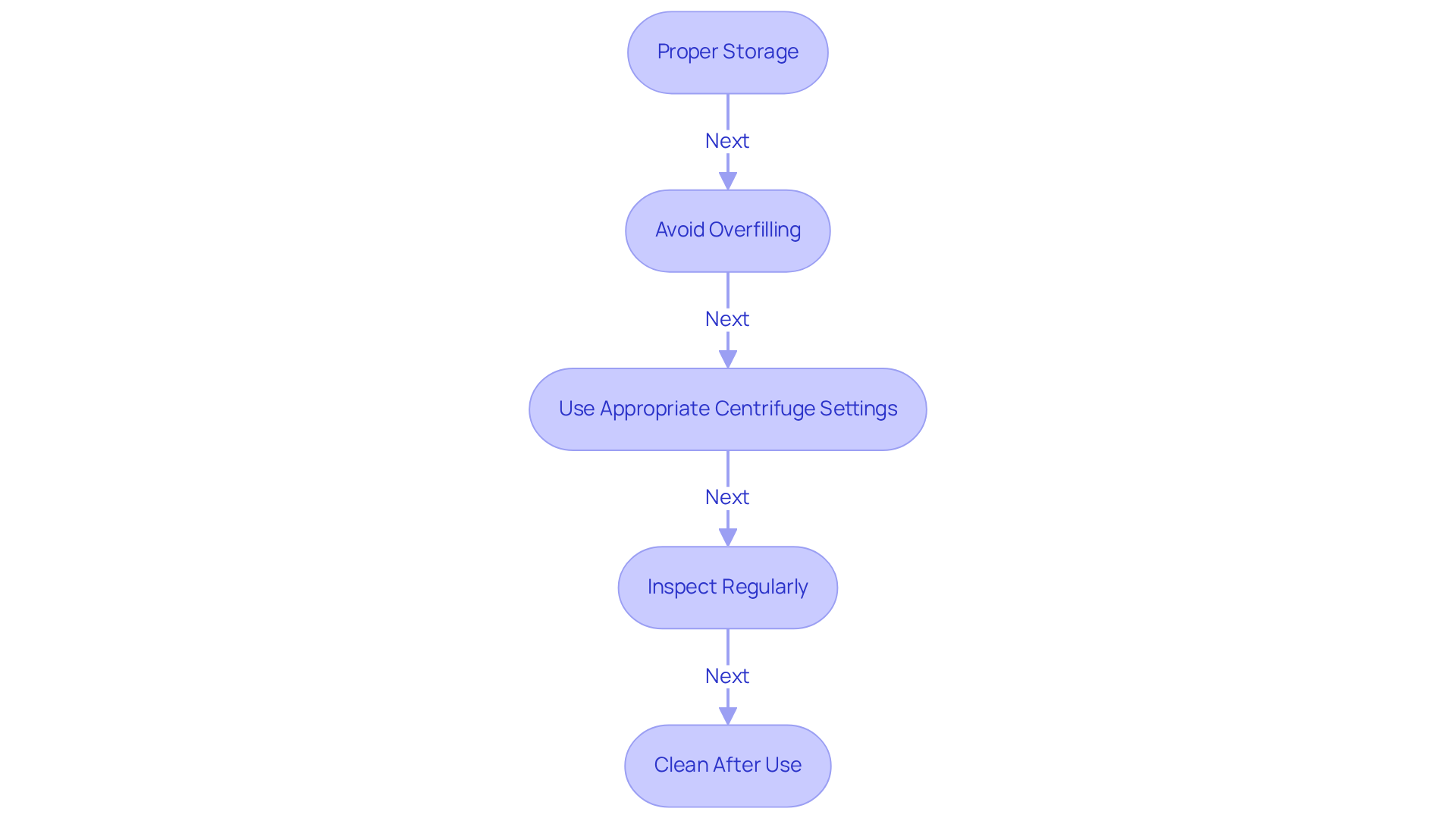Overview
This article delves into the mastery of centrifugation tubes, underscoring their critical role in achieving optimal results within laboratory environments. It highlights the necessity of selecting the right tube, taking into account factors such as material and compatibility. Furthermore, it stresses the adherence to best practices for handling and maintenance, which collectively safeguard sample integrity and ensure reliable analytical outcomes. Ultimately, understanding these elements is essential for any laboratory professional aiming to enhance their operational effectiveness.
Introduction
Centrifugation tubes play a crucial role in laboratory environments, serving as essential tools that enable the separation of substances based on their density. By grasping the intricacies of these specialized containers, laboratory professionals can enhance the accuracy and reliability of their experiments. Yet, with a vast array of options available—from polypropylene to glass—how can one effectively navigate the complexities of selecting the appropriate tube for specific applications? This article explores the fundamental principles, types, and best practices for utilizing centrifugation tubes, providing insights that can significantly improve the quality of scientific research.
Explore the Fundamentals of Centrifugation Tubes
Centrifugation tubes serve as essential containers specifically engineered to hold specimens during the spinning process, which efficiently separates elements based on their density. This process fundamentally involves the application of centrifugal force, prompting denser substances to migrate outward to the bottom of the container, while lighter materials remain suspended in the liquid above. Such separation is vital for numerous laboratory applications, including blood analysis, protein purification, and nucleic acid recovery.
Selecting the appropriate centrifugation tube is critical for maintaining sample quality and achieving consistent results. Important factors to consider when selecting a centrifugation tube include:
- The container's material—such as polypropylene or polycarbonate
- Its volume capacity
- Its compatibility with the specific centrifuge model in use
For instance, a centrifugation tube designed for high-velocity spinning must withstand greater forces without compromising its structural integrity.
Recent advancements in centrifuge container technology have led to innovations such as enhanced sealing methods and increased transparency for better visibility of specimens. Experts emphasize that the right choice of centrifugation tubes can significantly impact the quality of results, as improper selections may lead to contamination or material loss. As one laboratory specialist noted, "The quality of your samples starts with the proper selection of the spinning container; it’s a crucial step that must not be ignored."
Understanding these principles and advancements empowers laboratory professionals to more effectively, ultimately enhancing the reliability and precision of their scientific research.

Identify Different Types of Centrifugation Tubes and Their Uses
Centrifugation tubes are essential instruments in laboratory settings, available in various types tailored for specific applications. The most common types include:
- Polypropylene tubes
- Glass cylinders
- Microcentrifuge vessels
- Blood collection vessels
- Separation vessels
Each type serves a distinct purpose.
Polypropylene tubes are renowned for their chemical resistance and durability. They can withstand high centrifugal forces, making them ideal for biological samples. Additionally, their autoclave compatibility ensures effective sterilization. The growing preference for plastic centrifuge containers is driven by their lightness and durability compared to glass options.
In specialized applications, glass cylinders are favored for their outstanding clarity, which is crucial for specific chemical analyses. For example, glass centrifugation tubes are frequently utilized in high-precision chemical analysis where visibility of the specimen is paramount. However, their fragility compared to plastic alternatives can be a drawback in high-throughput environments.
Centrifugation tubes, specifically microcentrifuge vessels, are designed for small volume materials and are indispensable in molecular biology, particularly for DNA and RNA extraction processes. Blood collection vessels, on the other hand, are crafted for gathering and preserving blood samples. These containers often include additives that maintain the integrity of the samples, guaranteeing precise test results.
Separation vessels are utilized for isolating serum or plasma from blood cells. These containers typically incorporate that facilitate the separation process, thereby enhancing efficiency in diagnostic testing.
The worldwide centrifuge containers market is projected to grow from USD 1,925 million in 2024 to USD 2,695.908 million by 2032, indicating a compound annual growth rate (CAGR) of 4.3%. By comprehending the unique uses of each type of separation vessel, laboratory experts can make informed decisions that yield more reliable and precise outcomes in their analyses.

Implement Best Practices for Handling and Maintaining Centrifugation Tubes
To ensure the optimal performance and longevity of centrifugation tubes, it is essential to adhere to that guarantee the integrity and effectiveness of these tubes in laboratory settings.
- Proper Storage: Store the centrifugation tubes in a clean, dry environment, away from direct sunlight and extreme temperatures. This practice prevents material degradation and preserves sample quality. It is crucial to keep them away from high humidity areas to prevent moisture buildup, which can lead to potential mold growth.
- Avoid overfilling the centrifugation tube by always following the recommended fill volume to prevent spills and ensure effective separation during centrifugation. Overfilling can compromise the structure's integrity and lead to inaccurate results.
- Use appropriate centrifuge settings for the centrifugation tube: align the container type with the correct speed and time settings on the centrifuge. This alignment is essential to prevent harming the cylinders and to attain optimal separation of components.
- Inspect Centrifugation Tubes Regularly: Conduct routine checks for cracks, discoloration, or other signs of wear on the centrifugation tube before use. Discard any damaged containers to prevent contamination and ensure reliable results.
- Clean After Use: Rinse containers promptly after use to prevent residue accumulation. Follow the manufacturer's instructions for cleaning and sterilization to preserve the quality of the containers and extend their lifespan.
Implementing these best practices not only enhances the reliability of laboratory results but also fosters a safe working environment. Proper storage and handling of centrifugation tubes are crucial for preserving specimen quality and ensuring precise test results. As Natalie Brooks emphasizes, 'Proper storage of centrifugation tubes is crucial for maintaining sample integrity and accuracy of test results.

Conclusion
Centrifugation tubes are essential instruments in laboratory environments, serving a pivotal role in the separation of substances based on density. Selecting the appropriate tube is crucial, as it directly impacts the quality of results. Understanding the various types and best practices associated with their use is paramount for laboratory professionals aiming to enhance the reliability and precision of their research.
This article has explored the fundamentals of centrifugation tubes, detailing their types, materials, and specific applications—such as blood analysis and protein purification. It has underscored the importance of choosing suitable containers, taking into account factors like material compatibility and volume capacity. Additionally, best practices for handling and maintaining these tubes have been outlined, which are vital for ensuring sample integrity and optimal performance during centrifugation.
Ultimately, the effective utilization of centrifugation tubes is critical for obtaining accurate and reliable laboratory results. By applying the insights and guidelines presented, laboratory experts can refine their analytical processes and significantly contribute to the advancement of scientific research. Embracing these practices not only safeguards the integrity of samples but also cultivates a culture of precision and excellence in laboratory work.




